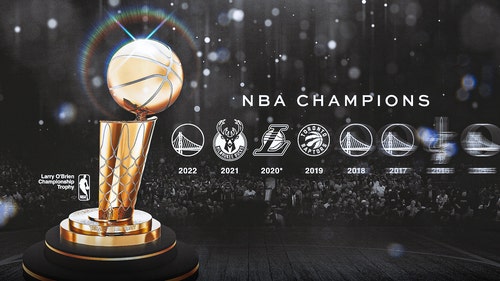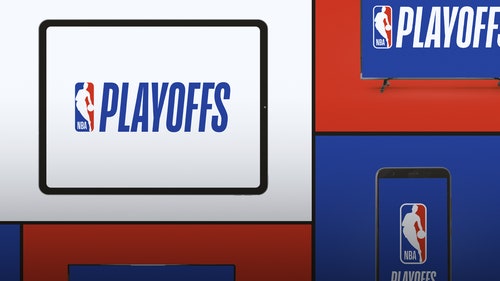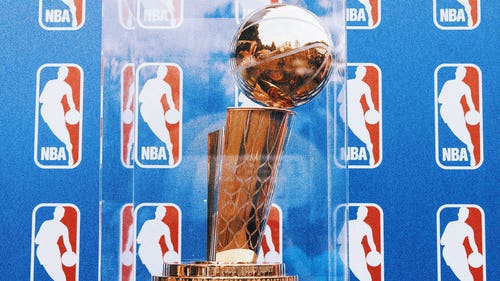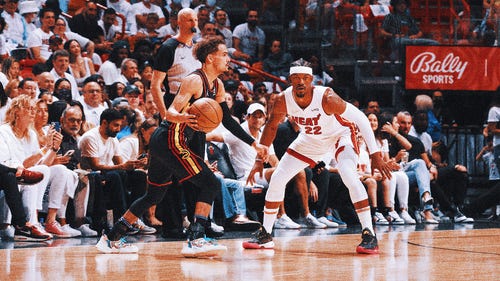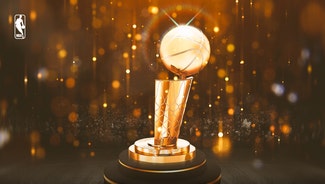
Golden State Warriors: 3 takeaways from Game 4 vs. Jazz
May 6, 2017; Salt Lake City, UT, USA; Golden State Warriors forward Kevin Durant (35) shoots the ball over Utah Jazz forward Gordon Hayward (20) during the second quarter in game three of the second round of the 2017 NBA Playoffs at Vivint Smart Home Arena. Mandatory Credit: Chris Nicoll-USA TODAY Sports
For each remaining game of the Golden State Warriors' playoff run, we will be breaking down three takeaways. We continue with their Game 4 win over the Utah Jazz in the Western Conference semifinals.
The Golden State Warriors beat the Utah Jazz 121-95 on Monday night to close out their second consecutive sweep. While every game in this Western Conference semifinals series included some semblance of a run from Utah, Golden State never once seemed to be in danger of losing a game.
Here's what we learned about this juggernaut as it improved to 8-0 this postseason.
1. The Warriors' regular season dependence on three-point shooting was an anomaly
The Warriors shot 40.7 percent from deep in their 67 wins this season, and 26.6 percent in their 15 losses.
The common takeaway from this was that the Warriors couldn't win when their shots weren't falling. A better takeaway would have been that they couldn't lose when their shots were falling, but the disparity was tough to ignore.
Against a team like the Rockets or Cavaliers, a cold shooting night will certainly be harder to overcome than it was against Utah. The Jazz didn't have the transition juice to capitalize on the long rebounds that missed threes often create. They also didn't they have the halfcourt offense to build big leads and force the Warriors to fire away in search of a comeback.
This is also true: The Warriors, even with average three-point shooting, are still the best team in the NBA.
The stats back it up. Their net rating in the playoffs thus far is +17.4. Cleveland is second, at +11.0. The Cavs have gotten to that number largely by shooting a blistering 43.4 percent from deep, while the Warriors have shot 37.9 percent.
The roster backs it up, too. Their ability to win games with their defense, while still downplayed, is nothing new. What is relatively new is their ability to score at an elite clip without the deep ball. The isolation scoring and penetration provided by Kevin Durant is obviously key, but so is a frontcourt that features a better lob threat (JaVale McGee), better post scorer (David West) and better offensive rebounder (Zaza Pachulia) than they had on their previous two Finals teams.
Of course, when the three-ball is falling, the Warriors are unbeatable. Hence the 67 wins. But a relatively-cold Warriors team still matches up favorably with a scorching Cavs team, something that was entirely untrue last June.
2. Bad JaVale lives
In the first round against Portland, McGee made "the leap," going from being aesthetically pleasing but subtly ineffective to being both fun to watch and crucial to his team. He regressed back to his regular season self in the second round.
Much of this is based purely on matchup. In Game 1, Quin Snyder targeted McGee's atrocious pick-and-roll defense the second he came onto the floor, as he was simply no match for Rudy Gobert.
As the series progressed, McGee fell back to some of his bad habits. Game 4 was his worst showing. There was a blatant goaltend, pointless fouls, dreadful rebounding form and comical perimeter defense.
Even as the following video is meant to highlight McGee's 12 points in 11 minutes, it is hard to ignore the cringe-worthy footwork, ill-advised block attempts and sloppy ball handling.
That video also includes some impressive finishes. If that were all McGee ever did, he'd be extremely effective. He's as good a lob-threat as there is in the NBA, and he can keep up from rim to rim with any big man in short spurts.
The Warriors are a perfect team for McGee, in that he doesn't need to do more than that. When he tries to, he's an unviable option—something that will only become more true as the competition stiffens and the margin of error tightens.
3. The bounce is back for Iguodala, Livingston
Andre Iguodala and Shaun Livingston are unique players. They have among the most distinct on-court games in the league, but they also stand out in this sense: They are as rock solid as they come, yet as unreliable as any Warriors' rotation player in the postseason.
More from Hoops Habit
This is due to age and mileage. Both players were excellent in the 2015 NBA Finals, and both were worn down by the end of 2016. The wear down appeared to be starting earlier this spring.
After failing to hit a three for the first six games of the postseason, Iguodala, 33, has hit three in two games. Livingston, 31, missed most of Round 1 with a finger injury, and struggled in Games 2 and 3 this round before bouncing back with a 3-of-4, +28 finish Monday night.
Neither player is asked to be a major scorer, and the takeaway is not that some shots fell for the pair of veteran reserves. Rather, it is that the lift they had on their jump shots was indicative of their rejuvenation. Each looked far more agile and spry than they had leading up to this point — not just shooting the ball, but on defense, in transition and as playmakers.
Those are the facets in which the Warriors need production out of these two. It is their ability to guard, push the pace, find teammates (often each other) on the break and keep the ball moving in the halfcourt that makes them the best duo of bench wings in the NBA. When the starters are clicking, the Warriors can go on enough six-minute runs to usually win. When these two join in, the team can dominate entire quarters, halves and games.






































































































































